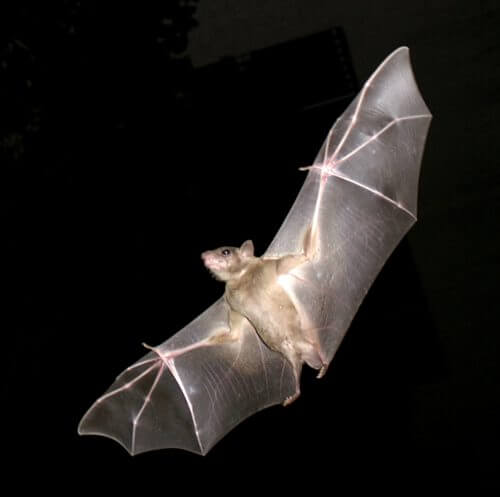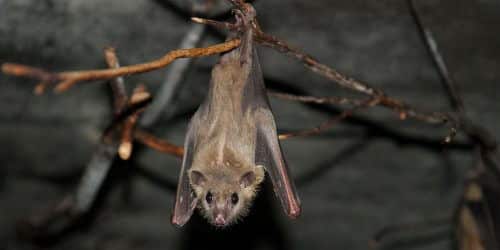In an experiment performed on bats, scientists from the Weizmann Institute discovered that it is a defined array of nerve cells that encode the target, as well as the direction and distance to it. Contrary to expectations, it turned out that this coding is mental and based on memory.

Where is the office building where we arranged to meet in about half an hour? Which direction to fly to reach my favorite fruit tree? Where to go to reach the common nest where warmth and a sense of security prevail? The ability to orientate in space, to know where, or in which direction is a certain destination that one wants to reach, is shared by most animals, from insects, through rodents, to humans. How do we, and other animals, do this? How are the starting point (where we are), and the destination we want to reach - and the route between them - represented in the brain?
This question has been preoccupying scientists for decades, and in the studies conducted, a lot of information was obtained about the "place cells" and the "parallel cells" in the brain, those cells that encode our position in space, that is, the starting point. The discovery of these cells, and an understanding of how they work, earned John O'Keefe, and the couple May-Britt and Edward Moser, the Nobel Prize in Medicine or Physiology for 2014. But what about the journey to the destination point, which is essential to our journey, from where we are to where we are Where do we want to be? How is our destination coded in the brain? This has so far remained an unsolved mystery.
Prof. Nahum Ulanovsky and research student Ayelet Sharel, from the Department of Neurobiology at the Weizmann Institute of Science, in the study of his findings Were published Recently in the scientific journal Sciencee, they put forward a possible answer to this old question. In the study, in which Dr. Arseny Finkelstein and Dr. Liora Less from the Department of Neurobiology at the Weizmann Institute of Science were also partners, the scientists describe a simple experiment that led them to the goal: discovering the way in which the goal is coded in the brain. The experiment was carried out with bats that carried tiny recording devices on their bodies, which enabled accurate tracking of the bats' flight paths, on the one hand, and what was happening in the "hippocampus" area of their brains during flight, on the other hand. The bats flew in a specially built controlled flight chamber at the Weizmann Institute of Science, with their destination being a certain position where a food they particularly liked awaited them.

The unique experimental systems used by the scientists showed that, in addition to the familiar representation of the starting point (a task that employed about a third of the neurons in the hippocampus), there is a specific set of neurons that encode the direction to the target - the food position. These cells (which were about 19% of the cells in the hippocampus) coded the direction to the target even when it was hidden - as revealed by another experiment performed by Ulanovsky and Sharel, in which a partition was placed between the bat and the target. In this experiment it was found that the cells coded the direction to the target "through the wall".
This result revealed the fact that the representation of the target in the brain is a mental phenomenon, based on memory, and is not carried out through sensory coding based on vision. This surprising discovery also explains the fact that we know where, in relation to our location, the office building we are headed is, even if we cannot see it behind other buildings, and also the fact that a bat knows where its favorite fruit tree is, even if there is a ridge between it and the tree hills In addition, this discovery can explain why damage to the hippocampus leads to the loss of the ability to navigate to the destination, as found in many studies, both in animals and in humans with Alzheimer's disease who have lost the ability to navigate in space.
"Another group of nerve cells", says Prof. Ulanovsky, "calculates and encodes the distance from the place where the bat is to the destination, and some of the cells encode direction and distance together." This description is reminiscent of familiar navigation systems, which present drivers with an estimate of the distance and travel time to a specified destination. It turns out that the brain cells have found a simple way - a kind of vector, or "arrow" - that allows them to combine all the data, and calculate and code according to it, at every moment, where to move and how long it will take to cross the distance between "here" and the "region of the object".
#Science_Numbers
19% of the neurons in the hippocampus encode the direction to the destination to which the bat navigates.

5 תגובות
interesting.
rival
The classic way to navigate a plane is "clock-map-terrain". You look at the clock, check where you should be on the map and then check in the field. In the last leg - which is around half a minute - you learn identification points by heart.
At least that's how it is in fighter planes. I guess if you fly high then there is time to look at the terrain and look for landmarks. When you fly a kilometer in three seconds at an altitude of 100 feet, everything goes by very quickly 🙂
The example of this song is interesting. The aborigines in Australia use very long songs to navigate to water sources (among other things). The song contains milestones and also basically defines times, because they sing at the pace of the walk. There are songs that define routes of hundreds of kilometers!!
Miracles,
Animals apparently navigate according to different methods, some according to the stars and the earth's magnetic field, some according to the visual landscape, etc.
When I try to think about how I know how to get from where I am to my destination, I think I do it through a series of visual landmarks in the landscape. For example, I leave the house, then I drive straight to the square with the palm tree, there I turn right, I continue until I reach a tall office building and there I turn left... that is, my route is a collection of intermediate points that are kept in my memory and each one leads me to the next intermediate point and so on to the destination . It seems to me that this is actually the classic way in which pilots arrive at their destination, through a collection of landmarks that they memorize in the landscape on the way to their destination.
In many ways it's like the memory of a song, it plays in your head with every chord and every word immediately reminding you of the continuation until you reach the end of the song.
Regarding ants counting their steps, it's really interesting, I see that there was even an article on the subject here:
https://www.hayadan.org.il/מד-מרחק-של-הנמלים
rival
It seems to me that the point is that we remember direction and distance to the destination. This is probably not true in complex cases - I know exactly how to get to my work, but I have no idea in which direction or in what range.
The vector to the target depends on the position and direction of the self - and over time you also need to perform an integration on the speed. So this mechanism is probably very limited.
I read that it was shown that ants have a different method of navigation - they count steps. This means that if you change the length of their legs then they don't reach the goal!
"This result revealed the fact that the representation of the target in the brain is a mental phenomenon, based on memory, and is not carried out through sensory coding based on vision. This surprising discovery also explains the fact that we know where, in relation to our location, the office building we are headed is, even if we cannot see it behind other buildings, and also the fact that a bat knows where its favorite fruit tree is, even if there is a ridge between it and the tree hills"
I did not understand what is so surprising here, after all we know as a fact that humans and animals know how to reach their destination even if it is many kilometers from them and is not visible to the eye, so what is the big surprise about? It would be surprising if it turned out not to be the case.